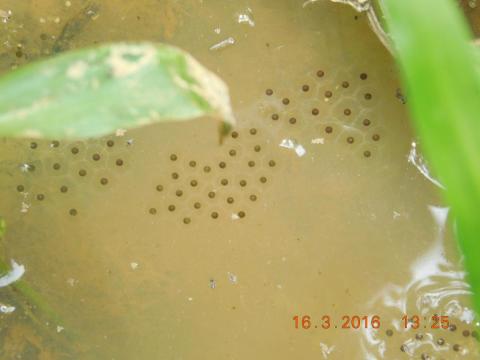Though ecologists regard humans modifying the landscape as a bad thing, when elephants trample the environment they are termed "ecosystem engineers" credited with seed dispersal and converting large amounts of plants into dung that is deemed an important nutrient input for terrestrial and aquatic systems. Even damage to trees is rationalized as creating refuges for small vertebrates (lizards and small mammals), while dung piles provide food for a diversity of beetles.
In that public relations sense, Asian elephants have been left behind, with ecosystem engineering by elephants credited to savanna elephants (Loxodonta Africana) and to a lesser extent, forest elephants (Loxodonta cyclotis) in Africa.
Perhaps now that can change.

You didn't trample the environment, you created a frog habitat. Image: Steven Platt/WCS
Said Steven Platt, Associate Conservation Herpetologist with WCS's Myanmar Program and lead author of the study: "Elephant tracks are virtual condominiums for frogs. This study underscores the critical role wildlife play in ecosystems in sometimes unexpected ways. When you lose one species, you may be unknowingly affecting others, which is why protecting intact ecosystems with full assemblages of wildlife is so important."




Comments